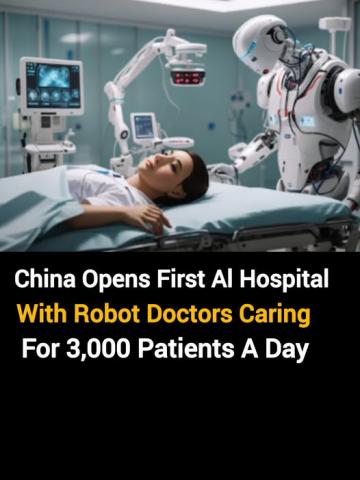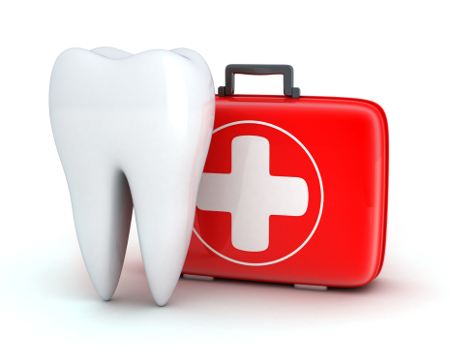Modern Dentistry, Timeless Smiles.
The Future is Now: How AI Robots in China Are Treating 3,000 Patients a Day
Topics teeth:
For decades, the image of a dentist has been a familiar one: a skilled professional in a white coat, peering into a patient's mouth with focused precision. But a quiet revolution is underway in clinics halfway around the world, and it’s reshaping the future of oral healthcare on an unprecedented scale. This isn't science fiction; this is the reality of AI-powered dental robots, and they are already seeing thousands of patients a day.
The Stats Are Staggering: Scaling Care Like Never Before
Imagine a single dental clinic, not with a handful of dentists, but with a team of autonomous robotic systems. Now, imagine that team successfully performing routine procedures like cavity preparation, dental cleanings, and even preliminary examinations on 3,000 patients in a single day.
This is the breakthrough happening now in China. These aren't simple tools; they are integrated AI systems that combine advanced imaging, real-time data analysis, and robotic precision.
How does it work?
-
AI Diagnosis: A patient's mouth is scanned using an intra-oral camera. The AI software instantly analyzes the images, identifying cavities, early signs of gum disease, and other issues with a level of consistency that can surpass the human eye.
-
Robotic Precision: Once a cavity is confirmed, a robotic arm, guided by the AI's 3D model of the tooth, performs the drilling. It removes only the decayed tissue, preserving the maximum amount of healthy tooth structure—a key goal in modern dentistry that is executed with superhuman accuracy.
-
Seamless Workflow: The entire process, from scan to preparation, is streamlined, drastically reducing the time per patient.
This Isn't Sci-Fi: It's the Next 5-10 Years of Global Dentistry
The deployment of these systems in China is a massive pilot program for the world. The primary goal is scaling accessibility. For too long, dental care has been limited by the number of trained professionals and the high cost of their time. This technology shatters that bottleneck.
In the next 5 to 10 years, we can expect this model to influence global dentistry by:
-
Making Basic Care Ubiquitous: AI robotic clinics can be deployed in underserved urban and rural areas, providing essential care to millions who currently have little to no access.
-
Lowering Costs: By automating routine procedures, the cost of treatments like fillings and cleanings can be significantly reduced.
-
Freeing Up Human Dentists: With robots handling the high-volume, repetitive work, human dentists can focus on what they do best: complex procedures like root canals, oral surgery, cosmetic dentistry, and providing personalized patient care and empathy.
How This Helps You: More Cavities Treated, Better Advice Given
So, what does this mean for you, the patient?
-
Earlier and More Accurate Cavity Detection: The AI doesn't get tired or have an off day. It will catch cavities at their earliest, smallest stages, often before they become sensitive or painful. This means simpler, cheaper, and less invasive fillings for you.
-
A Truly Personalized Prevention Plan: The AI doesn't just treat problems; it predicts them. By analyzing your unique oral microbiome (from saliva), plaque buildup patterns, and dietary habits you log in an accompanying app, the system can generate a hyper-personalized prevention plan.
-
"Our AI analysis shows you are at high risk for cavities on the chewing surfaces of your molars. We recommend a specific fluoride rinse and advise paying extra attention to brushing these areas after your afternoon snack."
-
-
Data-Driven Dental Advice: Forget generic flossing reminders. The advice from an AI-integrated system is specific and actionable.
-
"Our sensors indicate you are brushing with excessive pressure, which is wearing down your enamel. We suggest switching to a softer brush and demonstrate the proper technique via the app."
-
"Your scan shows early demineralization in two areas. By adjusting your diet and using a prescribed toothpaste, we can likely reverse this and avoid a filling at your next visit."
-
The Human Touch Will Evolve, Not Disappear
The rise of the AI dentist doesn't mean the end of your relationship with a dental care provider. Instead, it enhances it. The future of dentistry is a partnership—a synergy between unerring robotic precision and irreplaceable human empathy, expertise, and judgment.
The goal is not to replace dentists but to empower them with tools that allow them to care for more people, more effectively, and with greater predictability than ever before.
The next time you sit in the dental chair, the professional looking over your data might be a human, but the data itself will have been gathered and pre-analyzed by an AI that has already helped thousands of others smile with confidence that day.
healthy food:





